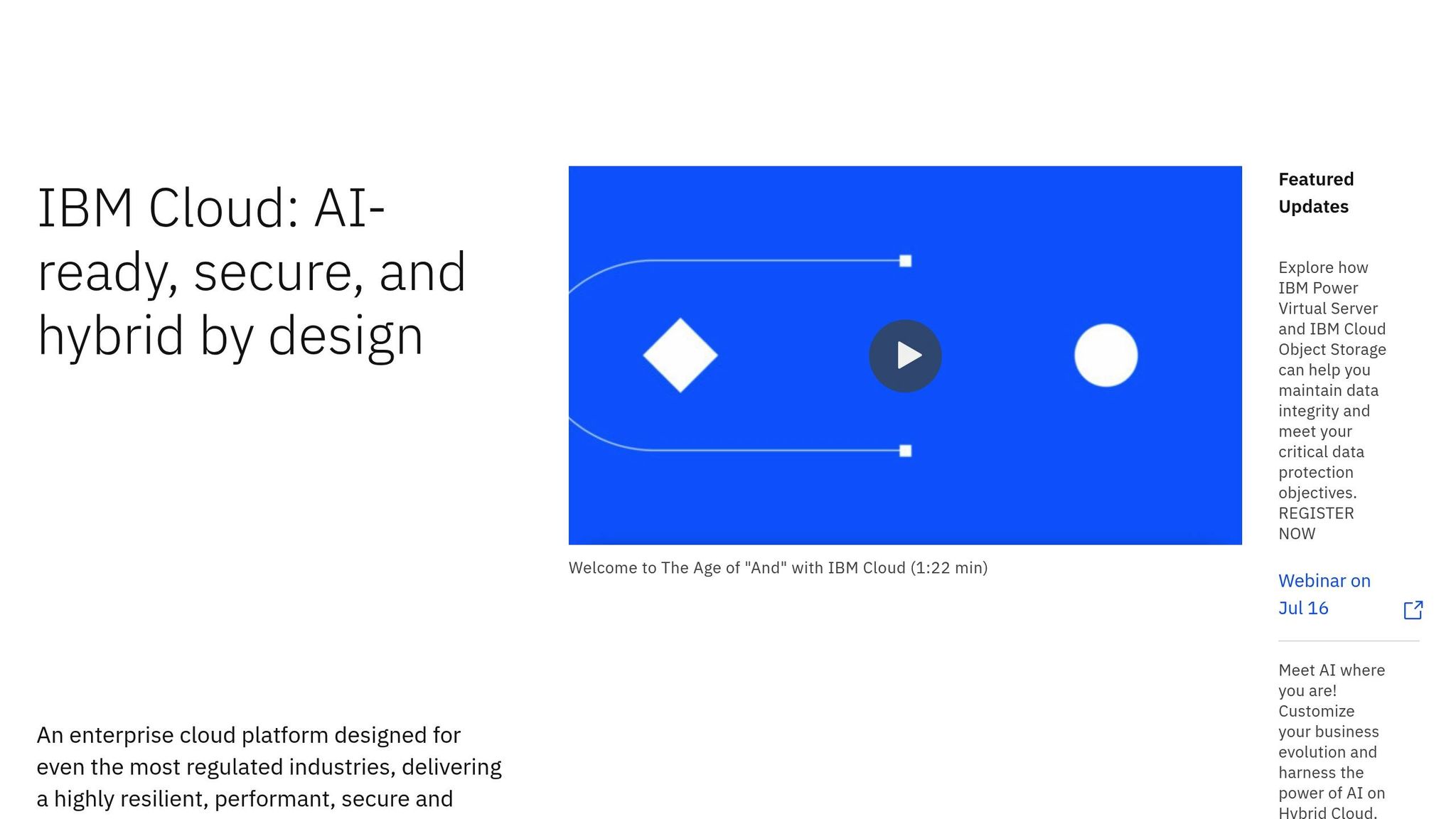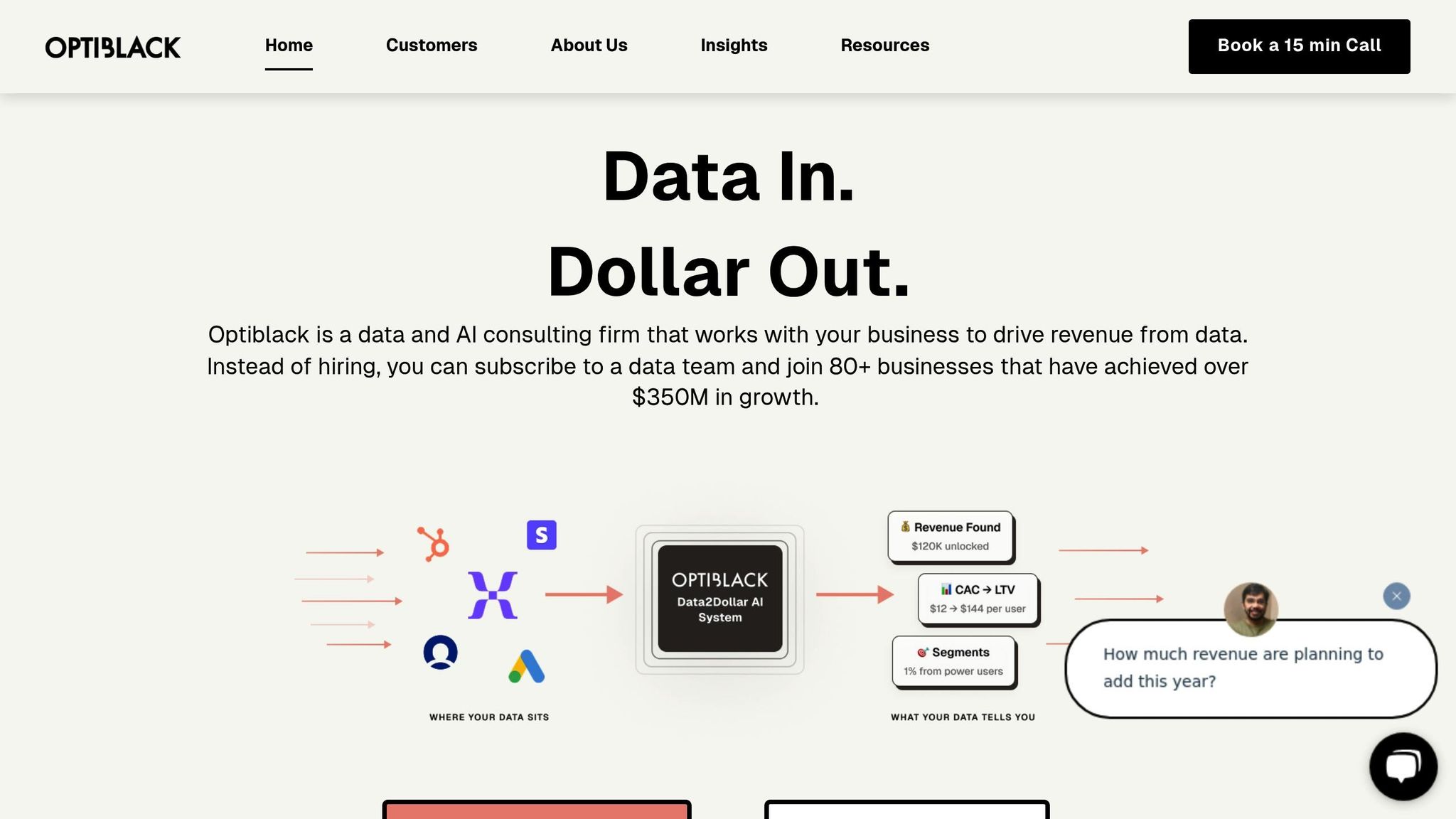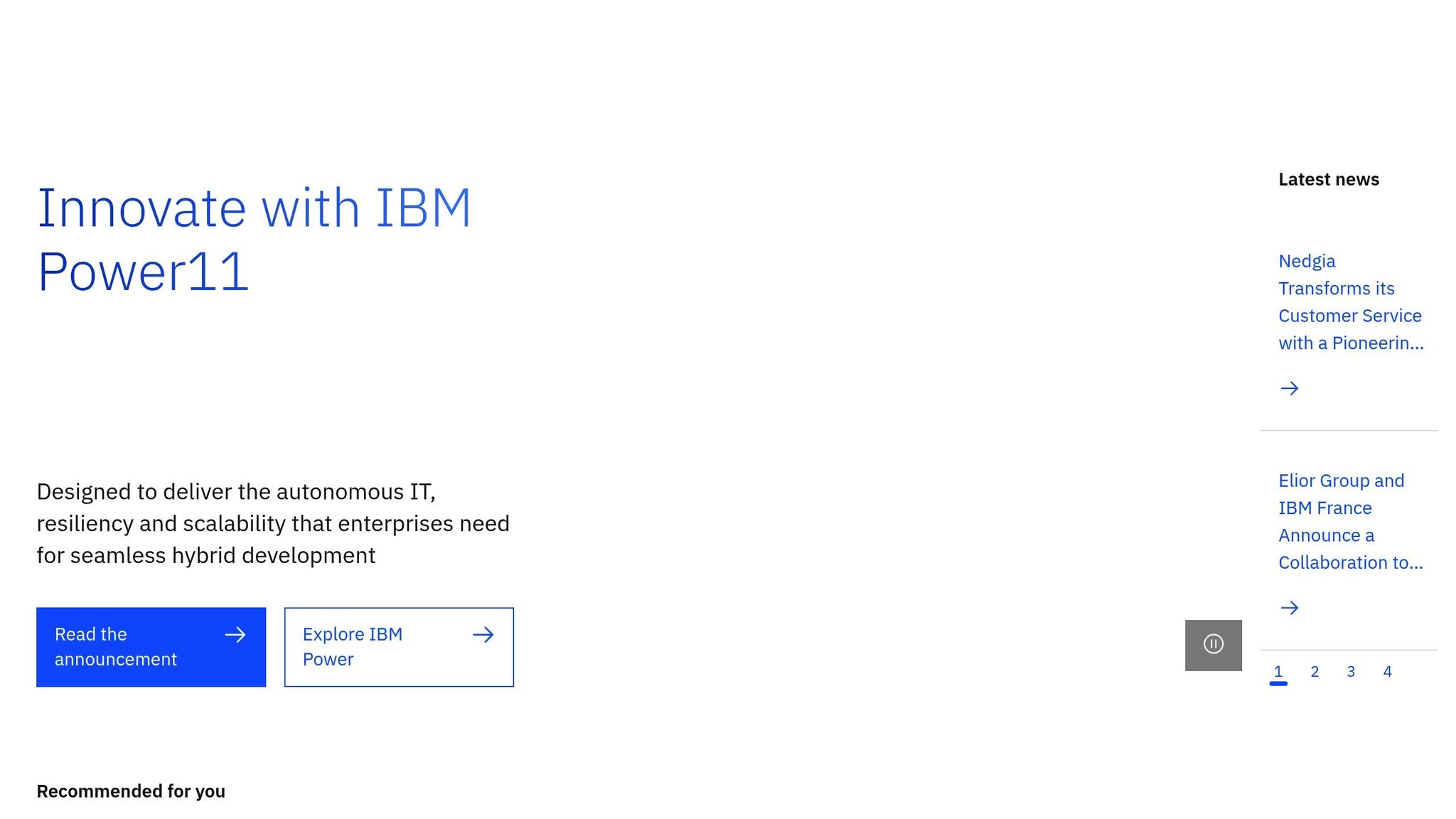Garde-Robe using data to make your shopping easier, fun and healthy
Garde-Robe launched an app with Optiblack's help, implementing analytics for user behavior insights, leading to a successful launch and investor...
Explore how different cloud service providers define SLAs, their uptime guarantees, compensation models, and industry-specific approaches.
Service Level Agreements (SLAs) define the performance standards and responsibilities between cloud providers and customers. They ensure services remain reliable, accessible, and responsive, while outlining penalties for disruptions. Here's a quick breakdown of SLA approaches from Microsoft, IBM, and Optiblack:
Each provider balances reliability, performance, and accountability differently, catering to varied business needs.
| Provider | Uptime Guarantee | Key Features | Compensation | Challenges |
|---|---|---|---|---|
| Microsoft | 99.9% | Broad service coverage, weighted metrics | Service credits | Complex claims process |
| IBM | 99.9% | Clear terms, monthly reports | Credits or monetary | Limited customization |
| Optiblack | 99.999% | Industry-specific, tailored metrics | Service credits | Smaller scale, niche focus |
Choosing the right SLA depends on your business goals and the level of customization you need.
Microsoft's Service Level Agreement (SLA) for Online Services sets clear expectations for uptime and performance across Microsoft 365 services, ensuring transparency in their cloud service delivery.
"The Service Level Agreement (SLA) describes Microsoft's commitments for uptime and connectivity." – Microsoft
Microsoft promises a 99.9% uptime for Microsoft 365 Business Premium services each calendar month. To put that into perspective, this allows for just about 43 minutes and 12 seconds of downtime per month.
Availability is calculated as the percentage of minutes that Office 365 services remain functional out of the total minutes in a calendar month. This measure applies to services like Exchange, SharePoint, Lync, and Office Web Apps, with each service weighted based on its adoption by users.
Microsoft's performance metrics center on ensuring smooth user experiences, particularly during authentication and system updates. Key evaluations include whether users can successfully log in and whether Microsoft Entra ID correctly issues tokens for accessing applications. Recent updates to their systems have further enhanced uptime reliability. These metrics provide a foundation for understanding how Microsoft mitigates service disruptions and compensates for failures.
If the 99.9% uptime guarantee is not met, customers may qualify for service credits applied to future invoices. These credits cover the direct impact of downtime but exclude other operational losses. Credit amounts vary by service, with some offering up to 100% credits if uptime drops significantly below the promised level. These penalties not only compensate customers but also drive Microsoft's ongoing efforts to improve infrastructure reliability and service performance.

IBM Cloud's Service Level Agreement (SLA) outlines the standards for service quality, accountability, and compensation mechanisms. It provides clear guidelines on how downtime is measured and establishes performance metrics for its cloud infrastructure services.
IBM Cloud guarantees availability levels tailored to each of its services, following industry standards. Many cloud providers, including IBM, aim for "five 9s" reliability, which translates to 99.999% uptime.
Downtime is calculated from the moment a client reports an issue until the service is restored. However, certain scenarios are excluded from this calculation, such as scheduled maintenance, factors outside IBM's control, client-related issues, or security breaches caused by the client.
IBM's SLA goes beyond uptime guarantees. It includes a variety of performance indicators such as mean time to recovery, response times, error rates, and compliance with security standards. By monitoring these metrics, IBM ensures its systems deliver consistent and reliable performance.
Availability is typically expressed in percentages close to 100%, such as 90%, 99%, or 99.9%. These benchmarks help organizations assess potential risks and prepare for possible service interruptions.
IBM has a structured process for handling SLA claims. Clients must report a Severity 1 issue within 24 hours of the incident and submit their claim no later than three business days after the end of the month.
To maintain transparency, IBM provides monthly SLA reports upon request. Clients can access these by submitting a support ticket.
If IBM fails to meet its guaranteed service levels, clients are compensated with service credits. In some cases, monetary compensation may also be provided. These remedies ensure accountability and offer tangible compensation for disruptions.
The compensation is capped at 10% of one-twelfth of the annual charge for each affected month. Repeated failures can lead to contract termination and potential reputational damage for IBM.
This detailed SLA framework sets IBM apart from other providers, preparing the groundwork for a comparison with Optiblack SLA Support Services in the next section.

Optiblack offers SLA support services tailored specifically for industries like SaaS, eCommerce, Fintech, and Hospitality. Instead of relying on generic models, they customize their approach to meet the unique demands of digital products. Their focus is on ensuring high performance while supporting product development and scaling efforts.
Optiblack prioritizes continuous monitoring and proactive maintenance to keep systems running smoothly. They understand that even brief downtime can have a big impact on business operations.
The gold standard in uptime is often referred to as "five 9s" or 99.999% availability, which translates to just 5 minutes and 16 seconds of downtime annually. Optiblack helps clients aim for these levels of reliability through services like Product Accelerator, Data Infrastructure, and AI Initiatives, all while maintaining a clear framework for uptime and performance evaluations.
| Uptime Percentage | Average Annual Downtime |
|---|---|
| 99% | 87 hours, 40 minutes |
| 99.9% | 8 hours, 46 minutes |
| 99.99% | 52 minutes, 36 seconds |
| 99.999% | 5 minutes, 16 seconds |
Optiblack's SLA framework goes beyond uptime guarantees by incorporating key performance indicators such as response times, error rates, and resolution times. They rely on automated tools to track and report these metrics with precision.
Each client's metrics are customized to fit their specific technology stack and workload. Optiblack sets realistic benchmarks based on current capabilities, while also introducing tiered goals to address varying levels of urgency. This method ensures measurable improvements in efficiency and supports better decision-making through data. Their strong performance monitoring also enables quick and effective responses to incidents.
Optiblack employs a structured, priority-based approach to incident response. Their system includes 24/7 monitoring, clear reporting processes, and a classification framework to address issues promptly.
Response times are aligned with industry standards based on the severity of the issue:
| Issue Priority | Response Timeframe |
|---|---|
| Critical issues | 1 hour |
| High-priority issues | 4 hours |
| Medium-priority issues | 24 hours |
| Low-priority issues | 48 hours |
Their process ensures that roles are clearly defined, customers are notified quickly, and detailed post-incident reports are provided. Regular training for their tech teams ensures they are prepared to handle critical situations effectively.
To maintain accountability, Optiblack offers service credits and implements corrective actions when service levels fall short of agreed-upon thresholds.
The compensation model follows industry norms, with service credits proportional to the duration and impact of the disruption. This approach not only provides tangible compensation but also reinforces transparency and trust in their client relationships.
Every SLA approach comes with its own set of benefits and challenges. By understanding these trade-offs, businesses can choose the right framework based on their operational needs and risk tolerance.
| SLA Provider | Key Advantages | Main Disadvantages |
|---|---|---|
| Microsoft Online Services | • Covers 130+ Azure services comprehensively • Promises 99.9% uptime for Microsoft 365 Business Premium • Offers 99.99% uptime for multi-zone Azure Virtual Machines |
• Claims process can be complex and requires customer action • SLA terms vary across services, causing potential confusion • Compensation is limited to future service credits, not operational losses |
| IBM Cloud | • Clear 99.9% availability target for the Security and Compliance Center • Strong emphasis on security and compliance • Consistent SLA across core services |
- |
| Optiblack | • Tailored to industries like SaaS, eCommerce, Fintech, and Hospitality • Proactive monitoring and maintenance • Defined incident response times |
• Smaller scale compared to major cloud providers • Requires close collaboration with customers • Limited to specific industry sectors |
Microsoft's SLA strategy is broad, covering over 130 Azure services, but this breadth can feel overwhelming. The variety of SLA terms across services adds complexity, requiring customers to actively monitor compliance and initiate claims. As Rob Sanfilippo, an analyst at Directions on Microsoft, explains:
"Customers often assume SLAs guarantee uptime for some 'number of nines' and when that uptime is interrupted, you aren't charged, analogous to when your electric goes out, the meter stops running, and you aren't billed during the outage. The reality of Azure SLAs is quite different: it's up to the customer to determine whether SLAs are met, submit claims if not, and then at best, receive some future free usage of the same service."
This process increases administrative workload, as businesses must track performance and handle claims themselves.

IBM Cloud simplifies things with a clear 99.9% availability target for its Security and Compliance Center. This straightforward model sets clear expectations, making it easier to manage. However, its "one-size-fits-all" approach may not suit organizations with diverse or complex workloads. By comparison, providers like Optiblack focus on customization, tailoring their services to specific industries.
Optiblack takes a hands-on approach, offering industry-specific solutions and proactive monitoring. This level of customization works well for businesses that prioritize close collaboration and need SLAs aligned with specialized goals. For example, Optiblack’s metrics often focus on response and resolution times, which are critical for mission-critical applications. However, this granularity might be excessive for simpler setups or companies with less demanding needs.
Microsoft, on the other hand, offers tiered SLAs, including 99.99% uptime for multi-zone deployments. While this high reliability is attractive, it often requires additional infrastructure and technical expertise, adding to costs.
Ultimately, selecting the right SLA comes down to balancing operational demands, technical capabilities, and risk tolerance. Whether it's Microsoft's expansive service portfolio, IBM's straightforward model, or Optiblack's tailored approach, businesses need to align their choice with their strategic goals and the complexity of their operations.
Choosing the right SLA framework comes down to understanding your business goals, technical requirements, and specific industry challenges. The examples from Microsoft, IBM, and Optiblack highlight how different providers prioritize uptime, performance, and accountability in distinct ways.
Microsoft focuses on ensuring broad service uptime but places responsibility on customers to navigate the claims process. Instead of compensating for direct operational losses, Microsoft offers service credits. This approach often works best for larger organizations with dedicated IT teams that can handle the complexities of managing service details.
IBM, on the other hand, offers a more standardized approach with clearly defined uptime guarantees and service credits for downtime. While this simplicity can be appealing, it may not fully address the specialized needs of industries with intricate or rapidly changing workloads.
Optiblack takes a tailored approach, aligning its SLA terms with the unique demands of specific industries. By incorporating custom metrics and proactive incident management, Optiblack ensures its services meet the critical needs of high-value transaction processing and real-time customer interactions.
Ultimately, selecting an SLA provider means aligning the agreement with your strategic goals. Regularly reviewing SLA terms ensures they continue to support your business as it evolves.
Microsoft generally provides service credits to address downtime, often linked to sales figures or usage levels. IBM, on the other hand, offers compensation through financial or service credits, with some agreements including earn-back provisions if performance surpasses specified benchmarks. Optiblack takes a different approach, emphasizing tailored performance guarantees designed to meet individual client requirements, although the details of their compensation plans are not widely shared.
When weighing SLA options, businesses should keep a few key factors in mind:
By carefully considering these elements, businesses can choose an SLA framework that meets their needs and helps reduce potential disruptions.
When reviewing an SLA, prioritize elements such as specific objectives, measurable performance standards, and how well it aligns with your business goals. Make sure it includes dependable uptime commitments, clear response time expectations, and strong security protocols suited to your industry. Check for transparency regarding penalties for unmet standards and processes for routine evaluations to ensure the agreement stays aligned with your changing requirements. A carefully designed SLA helps ensure your service provider consistently meets your operational needs.
Optiblack stands out by providing top-tier uptime and performance through the use of advanced monitoring tools and proactive service management. Their service level agreements (SLAs) are built to deliver on high availability promises, offering 99.999% uptime to ensure clients experience minimal disruptions.
What makes Optiblack unique is their emphasis on customized SLA metrics and real-time performance tracking. This approach allows businesses to align service expectations with their specific operational goals. By tailoring solutions, they help SaaS, eCommerce, Fintech, and Hospitality companies achieve greater efficiency and consistent performance.
Garde-Robe launched an app with Optiblack's help, implementing analytics for user behavior insights, leading to a successful launch and investor...
Load balancing enhances collaborative filtering by distributing tasks, improving speed, reliability, and scalability of recommendation systems.
Savona Foodservice partners with Optiblack to enhance data-driven decision-making and operational efficiency through advanced analytics, setting new...
Be the first to know about new B2B SaaS Marketing insights to build or refine your marketing function with the tools and knowledge of today’s industry.